Yachting World columnist and high latitudes adventurer Skip Novak on refloating a yacht stranded ashore in remote Argentina after a gale.
It is rare to leave the Antarctic Peninsula earlier than need be. No matter how much time you allow for a cruise in that splendid and awe-inspiring environment it is never enough time and the return across the Drake is done with regret, if not outright trepidation.
This February my Swiss Italian charter guests, on their sixth cruise with Pelagic Australis, were somewhat disappointed with the weather conditions. We had planned an eight-day ski mountaineering trip on Anvers Island but due to miserable drizzly weather with continuous low cloud the enthusiasm for what would be a major undertaking had ebbed.
The bad weather continued unabated, so we sailed far south searching for the edge of the polar high with no luck, other than one blue sky day on our return north to the central section of the Peninsula.
Luckily, all but one of the team had been on the Antarctic Peninsula before, some twice, and knew what it could be like so they were resigned with the decision to head back to Tierra del Fuego early, not least of all to beat a major depression that would be approaching the western Drake Passage in three days’ time.
Seasickness is always an issue for non-sailing mountaineers so there were no dissenters to this plan. So, motor sailing it was.
What are the best remedies for seasickness? We find out in our transatlantic survey
To burn off the charter time remaining I had proposed four days making stops on the infrequently visited Argentine coast east of the entrance to the Beagle Channel.
After the dull, grey weather in the south the beech forests would be easy on the eye and we could stretch our legs across the spongy, boggy terrain that the locals call La Turba. Bushes on the margins of this solid sea of sphagnum moss are peppered with ripening calafate and manzanita berries well worth picking for the crumble, and a good antidote to any bad memories of mal de mer.
Just after setting off from the Peninsula we received an email from Roxanna Diaz of Ushuaia Logistics, our fixer ‘at the end of the earth’, explaining that a 10m Belgian yacht with a solo sailor had been blown ashore in Bahia Aguirre – exactly where we planned to make our first stop.
His EPIRB alert had put in motion his rescue by the Argentine Navy on 18 February and he was taken to Ushuaia. There, he signed an document with the Prefecture agreeing that he was responsible for removing his boat from the beach. Easier said than can be accomplished.

Pelagic Australis in Bahia Aguirre.
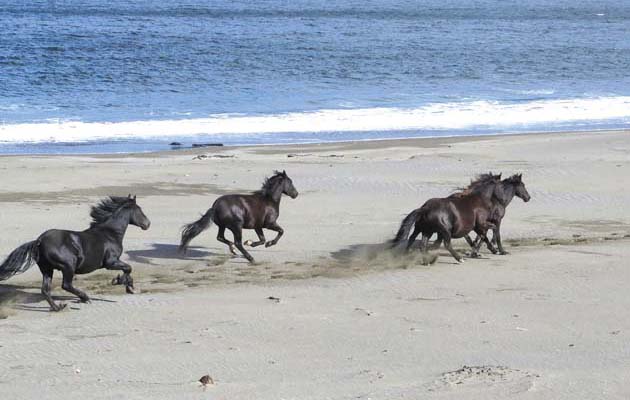

A call for help
Bahia Aguirre is 80 miles from Ushuaia. There are no roads going anywhere near the bay. Only the vestiges of a horse trail leading to an abandoned estancia. By horse, it is two days’ riding to the road head. By foot five days: I know as I walked this route in 1993 and it was arduous trekking. Roxanna Diaz took charge of the coordination from here.
One of my colleagues and an old hand in the area, Olivier Pauffin de St Morel (aka ‘Popof’) set out on his 14m Kekilistrion with the Belgian skipper and took him back to Bahia Aguirre. There was some concern that the contents of the yacht would be pilfered by fishermen as she was now high and dry.
Another friend of ours, Igor Bely on Kotic II, which was ahead of us on the return from Antarctic, dipped in, tried but could not pull him off. The boat had walked itself further up the beach in the surf and the keel was well now buried in the sand. Our arrival would coincide with a higher tide, so of course we were more than willing to have a go.
By the time we arrived on 24 February a week had elapsed since the boat went ashore. Bahia Aguirre is an enormous rectangle, five miles long and fully exposed to the south-east through south-west.
A small cove called Puerto Espanol is in the north-western corner which gives some protection from a southerly but it is not evident to a newcomer. The puzzle of why he anchored on the open main beach would be revealed.
We got within a few hundred metres of the wreck. Rather than risk a big surf landing with the inflatable we made contact and then backed off and anchored in our usual spot in Puerto Espanol. That afternoon we trekked two hours around to the estancia, crossing the main river that empties a broad valley.
Reconnaissance by foot
At some point in the near past, this was a working cattle farm. In 1993 I had spent two nights there with a French friend while on a two-week trek across the toe of Tierra del Fuego, and again the following year on another solo trek.
It is absentee-owned and four rough-hewn cowboys were in residence. Their job was to roam around the hinterland on horse and muster wild cattle into a manageable herd (killing any bulls in the process), then drive them out to the road head to the west.
This was a hard life even for an Argentine cowboy as they were all but marooned for 11 months of the year in a very remote area. They had a radio but it never worked while I was there.
They were provisioned once per year with the basics and then left to their own devices eating off the hoof, wing and fin. Visitors by yacht were rare. The cowboys are long gone and the ranch is dilapidated.
Approaching the run-down farm buildings we had to give a wide berth to a lone bull who pawed the ground while blowing steam. A herd of wild black horses galloped across our path, their long manes flying in the wind on the way down to the beach – these are the residents that have remained.
In this big-sky expanse of semi-tamed wilderness, once occupied but no more, the mood was nothing but melancholic.
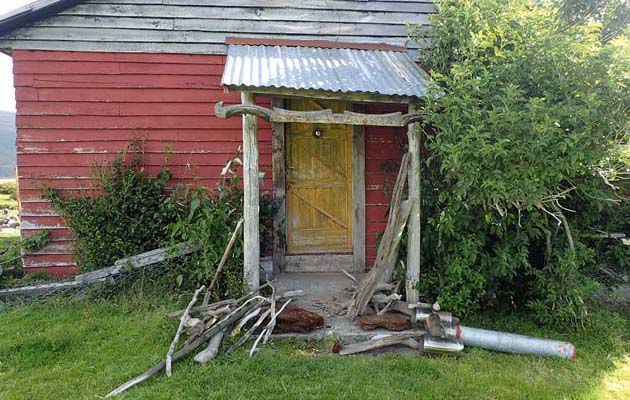
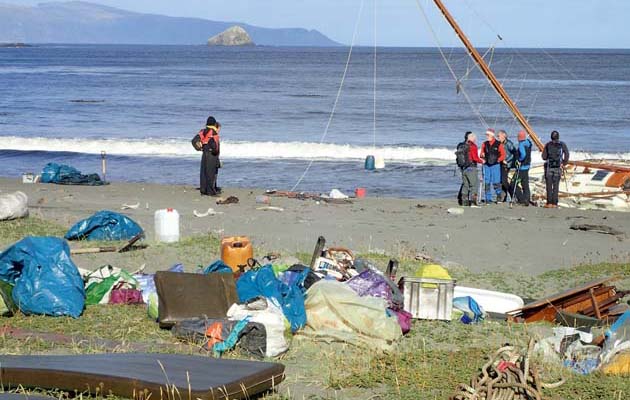
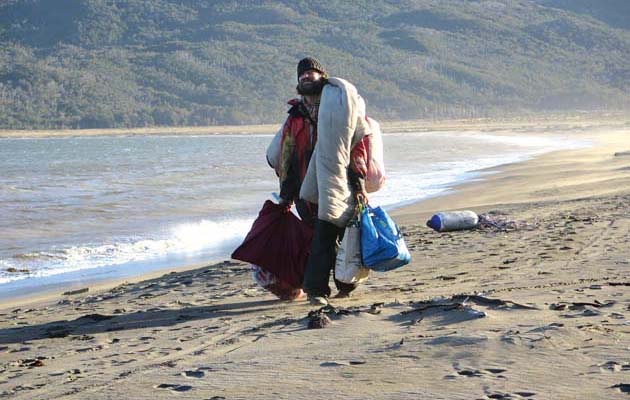
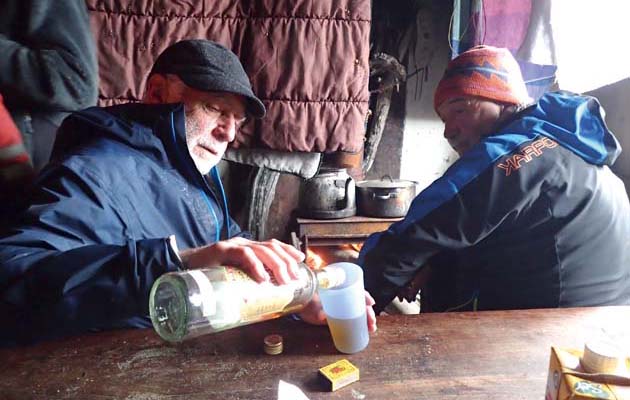
And so was the 42-year-old Belgian skipper, Alex Van Cauwenbergh, understandably so. He explained that after a hard delivery down from Europe in his yacht, Mira, which lasted a year, where almost everything on board broke or came adrift, he finally made it down the Argentine coast heading for Ushuaia.
At some point during a storm a line got caught in the propeller so he sailed into the open anchorage in Bahia Aguirre and dropped anchor in front of the estancia, exhausted. A southerly buster caught him out and in a jiffy he dragged and was on the beach.
This is not the first shipwreck on this coast. In 2010 a Polish yacht came ashore down the coast with the loss of two crewmembers in 100-knot winds as they dragged anchor. Luckily Alex landed on a sloping sandy beach, avoiding nasty rocks only 100m away.
Since he rejoined the yacht after the rescue, he had, during low tides, removed all the loose equipment from the boat, all the movable lead ballast and a fair part of the fixed interior. It was all piled up on the beach above the high water mark.
A cockpit hatch had come adrift during the grounding so everything was saturated with diesely bilge water – a right mess. Alex was sleeping in the abandoned farm building where there was a functioning wood burning stove.
We are committed
We made a plan drawn in the sand. We would get close enough with Pelagic Australis to get lines ashore and try to pull him off with brute force. The higher of the two tides the next day was predicted for the pre-dawn. We said we would call him on his handheld VHF at 0500.
The next morning was windy and pitch black – the plan easily scrubbed. By mid-morning it had eased so we anchored in 10m about 150m from the beach and landed with the inflatable, putting all hands ashore.
We had time until the afternoon high tide, so to keep busy and ease the operation to come we spent the next four hours digging the keel, rudder, propeller and much of the hull out of the sand. This was something the Swiss really got stuck into. Mountaineers are always handy with shovels although the wet sand was heavier than snow for sure.
During one fierce rain squall we all retreated into the farm building, built a fire and put the kettle on. A whisky bottle appeared.
Alex was asked by one of the Swiss businessmen where exactly he was from (in Belgium, but where?). His replied he was “citoyen du monde.”
This did not go down well and I thought to myself, yes, why stop there and not “d’universe.” This was a Bernard Moitessier moment if there ever was one.
The squall passed and we took up the shovels once again, finishing the job with a trench down below the waterline, which was now rising on the tide.
Meanwhile, skipper Dave Roberts and crew Thomas Geipel and Kirsten Neuschafer on board Pelagic Australis were preparing to run two of our floating shore lines into the beach with the inflatable. The plan was to attach one to the bow and the other to the stern so Mira could be dragged off on her side.
With the lines attached and all prepared, we returned to Pelagic leaving Alex on board. Still well short of the high tide, we gave it full welly.
Our 55 tonnes displacement and 250hp spun Mira around with a few snatches and soon she was bumping along the outer sand bar spray flying across her deck in the surf line.

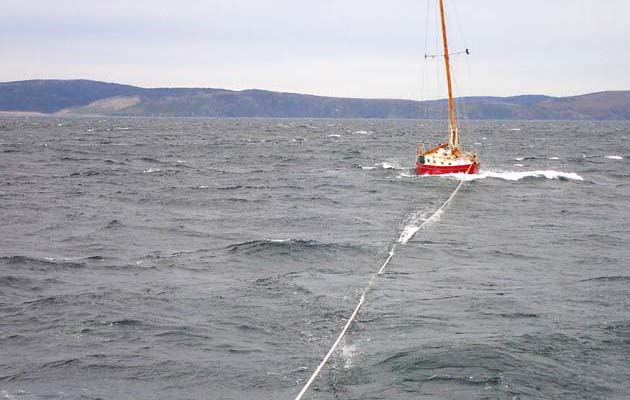
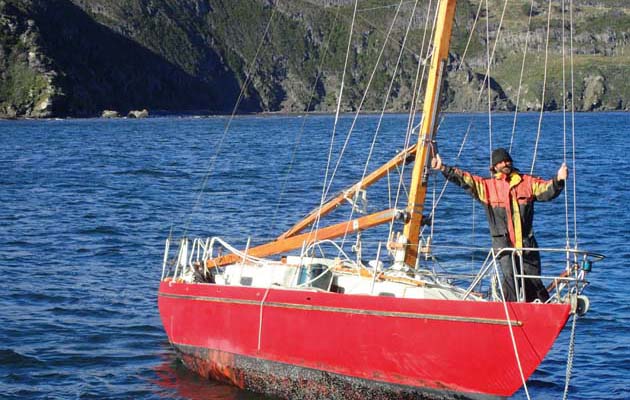

When in deep water Alex gave us the thumbs up sign and we brought him alongside and reset our anchor. And now the real work began in earnest as we embarked all the kit ashore with the inflatable straight on to the foredeck of Pelagic Australis.
We lost count of the trips. Motoring back to Puerto Espanol for the night, stage one was complete. Whisky and cigars came out after dinner in celebration.
Before we could put Mira on tow, she had to be emptied of all the sand that had accumulated over the week ashore entering via a sprung cockpit hatch on her port side. Despite our efforts we couldn’t get it all and the boat was listing 10° to port.
Reloading his gear off our deck took us all morning. The interior furniture he had removed was now handy as dunnage to brace the rest of the equipment to starboard and she was back in trim ready for the tow.
We set off late on the afternoon of 26 February with Mira on the end of our nylon anchor rode riding comfortably 130m astern. Once around the corner of the bay and heading west it was an uneventful tow coming on to a spell of calm.
We steamed into and up the Beagle Channel at five knots. We docked in Ushuaia on the afternoon of the 27th.
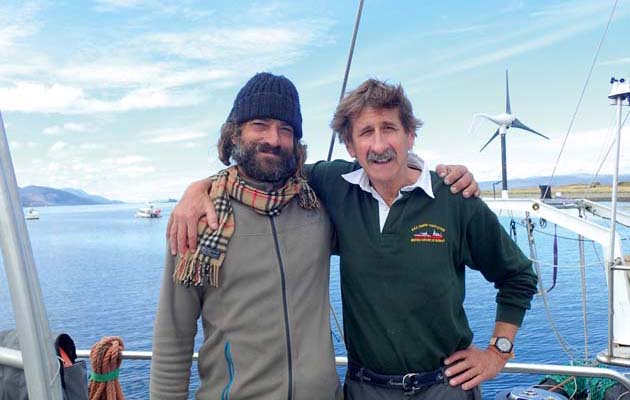
Belgian skipper Alex van Cauwenbergh (left) and Skip Novak.
Alex is now hosted by the Yacht Club Afysin in Ushuaia while rebuilding Mira. He intends to carry on up the west coast of Chile.
Meanwhile, my Swiss mountaineers returned to the fastness of their Italian Alps having enjoyed the added bonus of helping to rescue a sailor in need.




